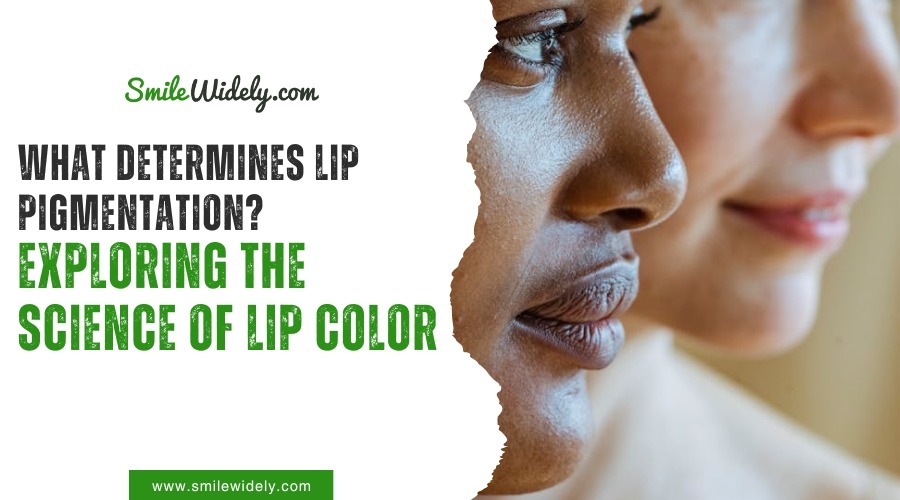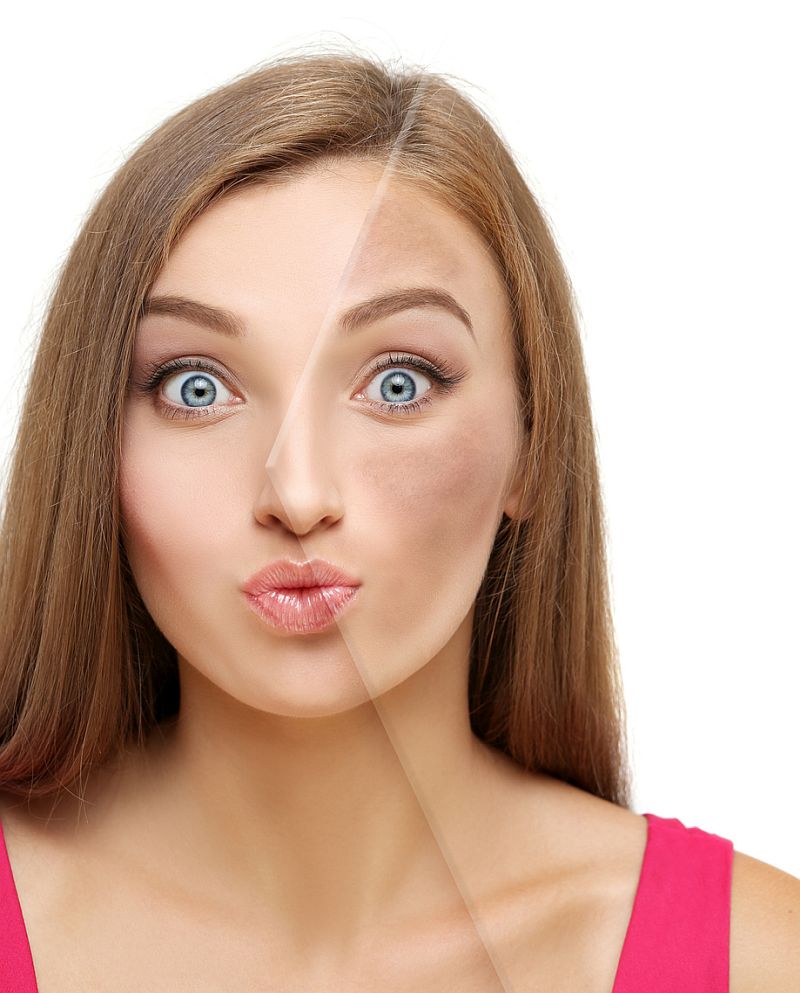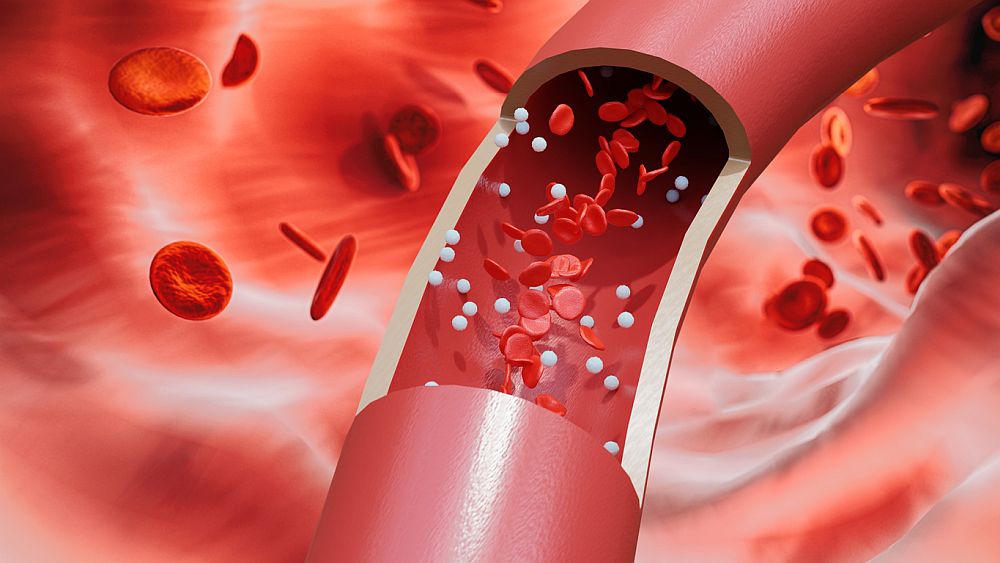Just as the canvas of a painting holds the potential to be transformed by the stroke of a brush, your lips are the canvas where genetics, lifestyle, and environment paint their hues.
You’ve likely noticed how lip color varies from person to person, but have you ever considered what lies behind these shades of pink, red, or brown? The pigmentation of your lips is a complex interplay of melanin production, blood flow, and more, influenced by factors ranging from sun exposure to your hydration levels.
Let’s explore this fascinating intersection of science and beauty, and uncover why your lips wear the color they do.
The Role of Melanin
Understanding how your lip color is determined starts with exploring the role of melanin, a crucial pigment in our skin. This pigment, produced by specialized cells known as melanocytes, is fundamental in defining the unique shades of your lips. Melanin’s primary job is to absorb ultraviolet (UV) radiation, safeguarding your cells from DNA damage. This protective function has a direct impact on the pigmentation of your lips.
The amount of melanin present in your lip cells is a determining factor in your lip color. If your melanocytes produce a lot of melanin, you’ll notice your lips appear darker. Conversely, a lower melanin production leads to lighter lips. This variation isn’t random but is influenced by a mix of genetic factors, hormonal changes, and even environmental aspects like your sun exposure habits.
Moreover, it’s not just about how much melanin is made, but also its type. Lip melanocytes can produce eumelanin, which gives brown to black tones, and pheomelanin, which contributes red and yellow hues. This complex blend and the distribution of melanin types result in the wide array of lip colors seen across different people.
Blood Flow and Color
As you consider the vibrant color of your lips, it’s essential to understand how oxygen levels and vascular health play pivotal roles.
The amount of oxygen your blood carries can significantly influence your lips’ shade, making them appear more vivid or pale. Moreover, the health of your blood vessels affects not just the color but could also signal underlying health concerns if changes are noted.
Oxygen Levels Impact
Oxygen levels in your blood significantly affect the color and flow, with low levels turning your lips blue as a sign of cyanosis. This condition, known as lip discoloration, demands immediate medical attention. It’s vital to understand the impact:
- Cyanosis occurs when red blood cells lack enough oxygen, leading to a bluish discoloration.
- Blue lips signal poor blood flow and oxygenation.
- Heart or lung issues can cause blue lips by affecting oxygen transport.
- Cyanosis is a serious condition indicating a lack of oxygen in the bloodstream.
- Immediate medical attention is required for blue lips to address the underlying oxygen levels issue.
Understanding these facts helps you recognize the importance of oxygen levels in maintaining healthy lip color.
Vascular Health Influence
Your lips’ color and health are significantly influenced by the state of your blood flow and vascular health. When your blood flow is robust, your lips boast a reddish-pink hue, signaling ample oxygen levels and healthy vascularity. This vibrant color comes from dense veins and a lower concentration of melanocytes in the vermilion of your lips.
Conversely, if your blood flow is poor, you might notice your lips turning pale or gray, a clear sign of decreased oxygen supply and reduced vascularity. Moreover, blue lips are a critical indicator of low oxygen levels in your blood, making red blood cells appear bluish due to inadequate oxygenation.
It’s vital to seek immediate medical attention for blue lips, as they could point to severe heart or lung conditions affecting your blood’s oxygen levels.
Genetic Influences
Understanding the role of genetics is key to explaining why individuals have varying lip colors. Your lip pigmentation is largely determined by genetic factors that govern how much melanin your skin produces. Melanin is the pigment responsible for coloring your lips, and its production varies greatly among individuals due to genetic diversity. This variation in genes affects not just the amount of melanin synthesis but also the distribution of melanocytes in your lips, leading to a wide spectrum of lip colors across different people.
Consider these key points about genetic influences on lip pigmentation:
- Variations in genes related to melanin synthesis lead to diverse lip colors.
- Genetic mutations can alter melanocyte distribution, impacting lip color.
- Certain inherited conditions, like familial lip melanosis, can darken the lips.
- Genetic factors explain the differences in lip pigmentation among populations.
- Understanding these genetic influences helps demystify why your lip color is unique to you.
Environmental Impacts
While genetic factors play a crucial role in determining lip color, environmental influences can also significantly alter pigmentation. Sun exposure, in particular, is a key environmental factor that affects your lips. When you’re out in the sun without protection, the UV radiation can stimulate melanin production in your lips, leading to darkening. This isn’t just a summer concern; prolonged exposure to the sun, regardless of the season, can contribute to changes in your lip pigmentation over time.
But it’s not just the sun you need to worry about. Smoking is another environmental factor that can impact the color of your lips. The oxidative stress and damage to lip tissues caused by smoking can lead to discoloration, leaving your lips looking darker or more uneven in tone.
Thankfully, you’re not powerless against these environmental factors. Using lip care products with SPF protection can help shield your lips from sun damage and maintain their natural color. It’s a simple step that can make a big difference in preserving your lips’ pigmentation against the environmental impacts you face every day.
Hormonal Effects
You’ve seen how external elements like the sun can affect your lip color, but it’s time to turn our attention inward to the role hormones play. Estrogen, in particular, has a significant impact on your lips, influencing their pigmentation as you go through different life stages.
From the natural changes of puberty to the choice of using hormonal contraceptives, let’s explore how these shifts can alter the color of your lips.
Estrogen Impact on Lips
Estrogen significantly influences lip pigmentation by stimulating the production of melanin, making your lips appear darker or more vibrant due to hormonal changes. This hormone plays a crucial role in how your lips look, impacting their color and appearance in several ways:
- Estrogen triggers melanocytes to produce more melanin, directly darkening the lips.
- Increased estrogen levels during pregnancy can cause lips to darken.
- Estrogen receptors on melanocytes adjust melanin production based on hormonal fluctuations.
- It enhances blood flow to the lips, contributing to their reddish hue.
- Shifts in hormonal levels, including estrogen, make lips look fuller and more vibrant.
Understanding estrogen’s role can help you appreciate the complex beauty of lip pigmentation.
Hormonal Changes Over Time
Hormonal changes throughout your life significantly impact lip pigmentation by altering melanin production.
During puberty, you might notice your lips changing color as hormonal fluctuations kick in, affecting how much melanin your skin produces.
Then, when you’re pregnant, increased estrogen levels could darken your lip color, showcasing the profound effect hormones have on lip pigmentation.
As you age, hormonal shifts continue to influence melanocyte activity in your lips, subtly altering their shade.
Even during menopause, hormonal imbalances can change your lip color, reflecting the ongoing dance between your hormones and melanin production.
It’s a fascinating journey that shows just how much your skin color and lip pigmentation are intertwined with the hormonal changes you experience over time.
Nutritional Factors
Maintaining a balanced diet rich in vitamins and minerals is crucial for keeping your lips’ pigmentation vibrant and healthy. Vitamins and minerals play a significant role in nourishing your body, and this includes the health and color of your lips. A deficiency in certain nutrients can lead to noticeable changes in lip color, often signaling an underlying health issue. For instance, a lack of adequate vitamins, particularly B vitamins, iron, and zinc, can directly impact your lips’ appearance.
Here are key points to consider about nutritional factors affecting lip pigmentation:
- Vitamin B12 deficiency can cause your lips to appear paler than usual, as it affects blood flow and color.
- Iron deficiency might lead to your lips losing their healthy pink tint, giving them a pale or even white appearance.
- Zinc deficiency not only affects the color but also the texture of your lips, potentially leading to dryness or discoloration.
- Ensuring you’re getting enough vitamins and minerals is essential for maintaining the vibrant pigmentation of your lips.
- Nutritional imbalances manifest in various ways, including lip color changes, highlighting the importance of a balanced diet for overall lip health.
Common Lip Discolorations
Lip discoloration can stem from a variety of causes, ranging from lifestyle habits to underlying health issues. You may notice your lips taking on a different shade due to factors like food or drink stains, hormonal changes, and sun exposure. Sometimes, the culprit behind those dark or uneven tones on your lips might be excess melanin production, leading to hyperpigmentation.
If you’re a smoker, or if you often find yourself dehydrated or consuming too much caffeine, these habits can contribute to darker lips. Similarly, allergic reactions to lip care products can change your lip color. But not all causes for concern; for instance, blue lips could signal low oxygen levels in your blood, a serious medical condition requiring attention. On the other hand, dark lips might result from smoking, injury, or spotting, while light lips could indicate issues like anemia or circulation problems, pointing towards nutritional deficiencies.
It’s essential to pay attention to these changes in your lip color, as they can offer clues about your overall health. Whether it’s a harmless stain from your favorite berry or a sign of a deeper medical issue, understanding these common discolorations can help you stay informed about your well-being.
Conclusion
In conclusion, your lips’ pigmentation is a complex interplay of factors like melanin, blood flow, genetics, and environmental influences. Hormonal changes and nutrition also play significant roles.
If you’ve noticed changes in your lip color, it’s not just about aesthetics; it could signal underlying health issues or lifestyle impacts. Protecting your lips, staying hydrated, and using SPF can help, but don’t hesitate to seek medical advice for persistent discoloration.
Your lips are a window to your health and well-being.






